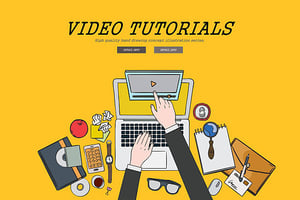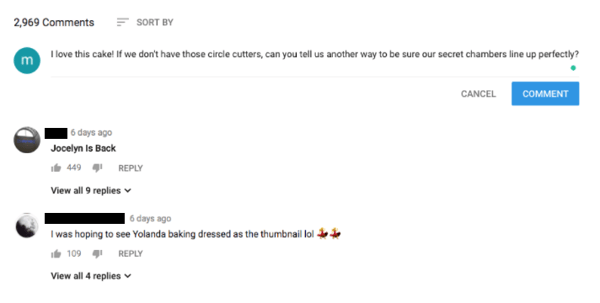Converse in the Comments
What’s the first thing you do when a new question or problem arises in your life? I’m not going to lie to you, I often bring mine straight to the Google search bar. Why do I have this headache that won’t go away? I’ll check WebMD. How do I make a terrarium? I’ll go to wikiHow for help. What kind of cake should I make for my friend’s birthday? I’ll look up a YouTube tutorial. Being able to conduct research on the Internet and learn online is extremely convenient, but is it actually helpful?

It is true that misinformation can spread rapidly online and a doctor can definitely diagnose my headache much more effectively than a website. Something like a video explaining a recipe, however, can be a great, quick and easy tool to help you get started on a new hobby. People use YouTube tutorials to learn all the time: about new makeup trends, how to dye their hair, how to get better at a video game, how to play their favorite song on the guitar, about something interesting they can cook for dinner, and the list goes on. Simply put, the video format is easier for some people to follow than written instructions.
Social Comments
In regards to hobbies, people used to, and sometimes still do, go to places like their local recreation centers to take classes in things like pottery or meditation. But why leave the comfort of your own home when you can learn the basics of a wide variety of subjects from your computer screen? Well, learning certain new skills might be simple and quick, but many hobbies traditionally involve human interaction. Conversations with instructors and classmates are often key parts of the learning experience, parts that some argue are missing from online learning resources, like a YouTube tutorial.
It’s very easy to watch a video and completely disengage. In some ways, the internet does a lot of work for you. But social media is meant to be interactive. On a social media site, everyone is meant to engage, to literally be social. It is optional to just watch or scroll on social media, but this isn’t a great use of your time, especially if you are trying to get something constructive out of your online experience. The comments section of YouTube is really the place you need to go to in order to get into the social aspect of that website. This feature is also incredibly helpful when it comes to tutorials. In fact, learning off of YouTube doesn’t allow for conversation at all without the use of the comments section.

Say you’re watching a video in order to learn how to make that birthday cake that’s shaped like your friend’s favorite animal, but you have a question that the content creator isn’t addressing. If you were taking a baking course, you could just raise your hand, get the answer, and carry on. If you’re learning online, however, don’t yell at your screen about frosting like you’re watching a football game. Instead, type out your question in the comments. You won’t get an answer as quickly as you would in a classroom, it’s true. In fact, the actual content creator might not respond to you at all depending on the channel size. The more subscribers a channel has, the less likely it is that they have time to moderate their comments section, but that doesn’t mean you won’t get an answer at all- this is where the other users come in.
A Sense of Community
Another helpful aspect of the comments section is contact with other users. In fact, if you just scroll down, you might find that someone else has already asked your question, and yet another person, or persons, has answered that question. The comments section of YouTube allows for discourse between viewers. This discourse can be akin to working in a group or debating during a class discussion. Either way, you’re missing out on a huge part of YouTube if you never venture into the comments.

A lot of YouTube viewers feel like they are part of a community and many of them are loyal to specific channels. These dedicated viewers are probably pretty knowledgeable when it comes to the type of content on the channels they’re subscribed to. These followers are also probably in the comments often, looking to connect with online friends, and happy to answer questions for newcomers. Much like a classroom, the comments section on a tutorial video can be a great place to network with people who are interested in the same subjects as you are.
Now, comments on YouTube videos can also be the opposite of helpful; they can sometimes be downright nasty. Just like on any other social media site, you’ll find your fair share of users who share offensive opinions and mean statements, often for no better reason than just because they can. So beware that you may have to wade through a few comments saying things like, “This cake sucks! It looks like a lion, not a tiger! Bet it tastes terrible too, don’t quit your day job!” Thankfully, YouTube has algorithms in place now that raise the most valuable, helpful and engaged comments to the top of the section, which in turn forces the pointless, hateful ones down towards the bottom.
Don’t let the negatives of online learning get in the way of a full experience. Comment sections are filled with all kinds of humans, for better or worse, but this is what keeps the internet from becoming too impersonal and our modern day communication from being too stoic. The comments section makes YouTube an interactive site to be on. Whether you’re trying to learn how to bake a cake or just watch something for pure entertainment, the comments section can be a helpful and enjoyable feature of YouTube when used appropriately.






Leave a Reply